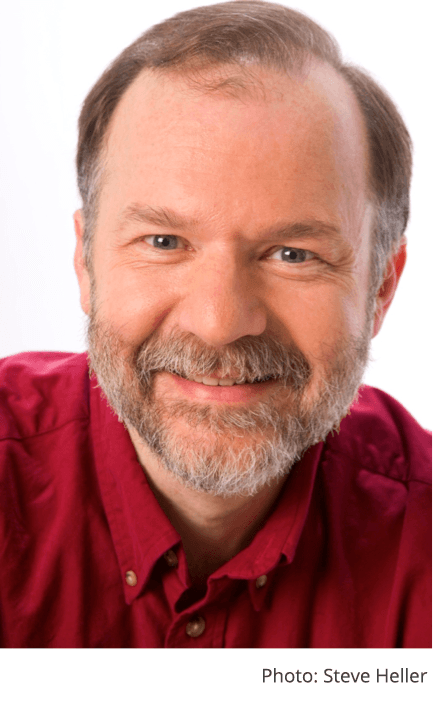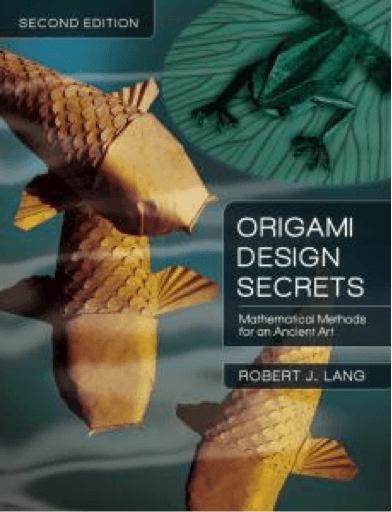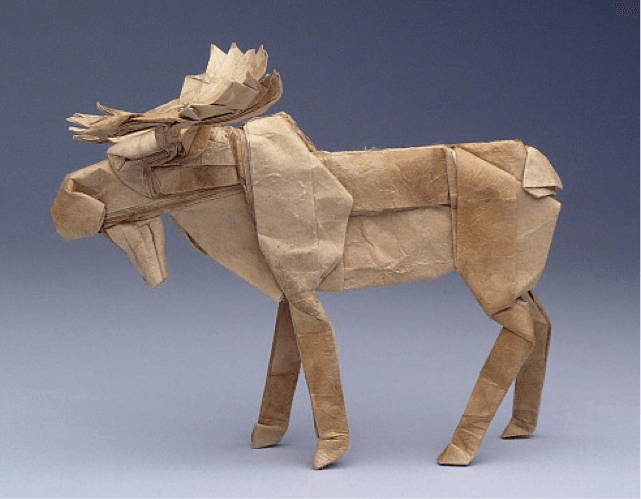At Hinge, we have been studying Visible ExpertsSM, people who have attained high visibility and expertise in their industry, creating a personal brand that is recognizable industry-wide. We study them because we want to understand how they attained that status and what we can learn from them. This profile focuses on Robert J. Lang, Ph.D., a Visible Expert for engineering, art, and design.
Art as Life

When Robert Lang became interested in origami at the age of six, he never thought that it could one day become a career. According to Robert, he “got hooked” on origami because of its simple aesthetics and the seemingly limitless possibilities for design. “It was something I could pursue with just paper and my hands,” he said, “and yet there was no end to the levels of complexity. Even now, there are far more avenues to pursue than I have time to spend.”
Robert’s interest in origami became a dedicated hobby that followed him into adolescence. When the time came to go to college, though, he went with a more practical choice. “I chose engineering, which is also about making things,” says Robert. “It has a lot more in common with origami than people think.” Robert studied electrical engineering at the California Institute of Technology (Caltech), designing circuits and learning about lasers and optics—the manipulation of light. He went on to earn a master’s in electrical engineering from Stanford University, returning later to Caltech for a Ph.D. in applied physics.
After a post-doc in Germany and a stint working for a lab funded by NASA, Robert took a job as a physicist at Spectra Diode Labs, again focusing on laser technology. After nearly a decade of high-level engineering and research, Robert wanted a change.
“I had already published seven books teaching people how to replicate my designs,” Robert explains. “Now I wanted to move away from an origami ‘cookbook’ into actually teaching people how to create their own designs.” This was a major move—something that had never been attempted before. “I couldn’t do it part-time,” Robert says, “so I decided to quit and devote myself full-time.”
Writing the Magnum Opus
The book that came out of that decision, Origami Design Secrets: Mathematical Methods for an Ancient Art, is considered to be Robert’s magnum opus, and it launched him into the limelight. “It took me two years to write,” Robert says. During that time, he supported himself through a mixed bag of laser engineering and origami consulting projects.

The book was a success, triggering a snowball effect of opportunities that firmly cemented his status as Visible Expert. “The book played a huge role,” Robert says. “I was already considered an expert but Origami Design Secrets bumped both my visibility and the perception of my expertise. There were increasing requests for lectures. Then someone would see me at a lecture, and it would turn into another project. Eventually I got asked to do a TED talk, which led to a New Yorker profile, and so on. It became a cascade of visibility.”
Eclectic Business Model
Robert is unique in that he has been able to synthesize his art into every part of his life and his career. Today, Robert’s work roughly comprises 1/3 origami art commissions, 1/3 university research projects, and 1/3 engineering applications for the commercial sector. Here’s how he describes each of these activities:
Origami commissions
Private art collectors and museums hire Robert to create a specific piece of art, ranging in size from a few inches to 18 inches. He also gets commercial art commissions from companies that want to use his art in television commercials or tradeshows. These commissions are sometimes for much larger pieces—sometimes as big as 10 or 15 feet.
University research projects
Robert has been partnering with scientists at some of the major research universities to explore the engineering applications of folding. He has also written and co-authored a number of articles on this topic.
Engineering commercial applications
Robert combines his engineering and origami knowledge to help companies create unique products that are able to fold. For one company, he created a special container for liquids that folds up as it empties. He’s also created a 3D antenna that could be folded from a flat-sheet circuit board.

The Marketing Triumvirate: Lecturing, Writing, and Website
For Robert, there are three elements that he feels have been critical to marketing himself: lecturing, writing, and creating his website.
Creating a website
More than any other digital channel, Robert’s website has become his most critical online marketing tool. “It’s extremely important,” he says. “Most of my inbound leads come through website, either through the contact form or through the regular email address.” Robert’s website is an online showcase, displaying myriad examples of his work, offering links to his various publications and lectures, and explaining his different branches of work. When he was deciding on the site’s design, Robert saw that “if my website would be my portal to business, then it had to demonstrate, in its very design, what I could do in my art.”
Lecturing
Lecturing has been an important way for Robert to gain visibility, and he books about 20 speaking engagements every year. He gives lectures to many different types of audiences, from high school students to corporate gatherings. “You need to tell a good story, because that’s what people love,” he says. “I start with the history of origami as an ancient Japanese art, then I show how it has mathematical implications. I make it more or less technical, depending on the audience.” Robert’s higher-end lectures often lead to new business opportunities. He makes a point of following every lead and opportunity, as “often, I would not know what a ‘big opportunity’ was until after it already happened.”
Writing
Robert produces a book almost every two years. In between, he writes articles, co-authors research papers, and gives interviews. Writing is “a big time investment,” says Robert, “but that first book is hugely important.” When Robert started publishing his books of origami designs in the 1990s, he quickly became known in the world of origami. “But no one outside of the origami world knew about me,” he says. The success of Origami Design Secrets led to lectures that introduced the non-origami world to Robert, triggering much of the press and speaking events that helped him become a Visible Expert.
Secrets of Success
Besides the fact that both art and engineering are at the root of all of his work, Robert’s projects all share another characteristic. Every project he accepts has to pass the test of being interesting and personally compelling. Robert says, “Before I sign on to a project, I ask myself ‘am I going to enjoy this project?’ Personal satisfaction has always been a primary driver.” This criterion could be seen as a defining philosophy for Robert’s entire career. “I didn’t set out to become a Visible Expert,” he says. “I set out to do interesting things, things that were fun and personally satisfying. I became a Visible Expert almost by accident.”
Learn more about becoming a high visibility expert in your industry in our book, The Visible Expert.
On Twitter or LinkedIn? Follow us @HingeMarketing and join us on LinkedIn.


